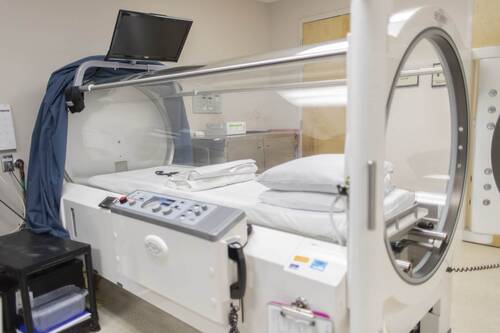
19 Sep The Evolving Landscape of Oxygen Therapy: Recent Advances and Their Impact on Patient Outcomes
Oxygen therapy has come a long way since its early days. Initially, it was a simple and somewhat limited treatment.
Today, it’s a sophisticated field with a range of innovative technologies improving patient care.
This article explores the latest advancements in oxygen therapy and how they are reshaping patient outcomes.
Historical Context of Oxygen Therapy
Oxygen therapy began as a crucial intervention for treating respiratory conditions. Early on, it was used primarily in hospitals with basic equipment, often involving cumbersome tanks and limited delivery systems.
As technology progressed, so did the methods of oxygen delivery. In the past, oxygen was administered mainly through large, stationary tanks. These setups were not always practical for patients needing ongoing therapy at home.
The early technologies had significant limitations, including bulkiness and high costs. The evolution from these basic methods to more sophisticated systems marks a significant shift in patient care.]
Recent Advances in Oxygen Therapy
Innovation has been at the heart of modern oxygen therapy. Recent advancements have transformed the field in several ways, making treatments more effective and accessible. Portable oxygen concentrators are one such innovation.
These devices are smaller, more efficient, and allow patients to receive oxygen therapy while on the go. They provide a great deal of freedom and mobility, which was previously challenging to achieve.
Another significant development is the enhancement of delivery methods. High-flow nasal cannulas and non-invasive ventilation techniques have become more refined.
High-flow nasal cannulas can deliver higher concentrations of oxygen at a faster rate, improving patient comfort and outcomes. Non-invasive ventilation techniques have also advanced, providing better support for patients with conditions like sleep apnea or chronic obstructive pulmonary disease (COPD).
Personalized therapy approaches are also making a big difference. Treatments are increasingly customized based on individual needs and conditions.
This means patients receive oxygen therapy that’s specifically tailored to their medical history, lifestyle, and unique requirements. Personalized therapy helps optimize treatment effectiveness and can lead to better overall health outcomes.
One such example is hbot therapy, which adapts to the specific health challenges each patient faces. By incorporating hbot therapy, healthcare providers can further enhance the precision of treatments, contributing to improved recovery times and overall well-being.
Impact on Patient Outcomes
The recent advancements in oxygen therapy have had a profound impact on patient outcomes. One of the most significant improvements is the enhanced quality of life for patients with chronic respiratory diseases.
Portable devices and advanced delivery methods have made it easier for patients to live more active and independent lives. This has resulted in fewer hospitalizations and a better overall quality of life.
Recovery rates have also improved thanks to these advancements. For instance, patients using high-flow nasal cannulas or non-invasive ventilation often experience faster recovery times and better clinical outcomes. These methods allow for more effective oxygen delivery, which can accelerate healing and reduce complications.
Real-world examples highlight the benefits of these new technologies. For instance, patients with severe COPD have reported significant improvements in their ability to engage in daily activities and enjoy a better quality of life. Similarly, testimonials from users of portable oxygen concentrators often mention the newfound freedom and mobility they experience.
Challenges and Future Directions
Despite these advancements, there are still challenges to address.
Accessibility remains a significant issue. While modern technologies are more advanced, they can be expensive and not always available to everyone who needs them. Cost considerations and the availability of newer devices can be barriers for some patients.
Another challenge is potential side effects associated with new technologies. While advancements like high-flow nasal cannulas offer many benefits, they can also come with risks or complications that need careful management. Ongoing research aims to address these issues and improve patient safety.
Looking ahead, the future of oxygen therapy seems promising. Research is continuously exploring new technologies and treatment methods. One area gaining attention is HBOT (Hyperbaric Oxygen Therapy), which involves breathing pure oxygen in a pressurized room. This therapy has shown potential in treating a variety of conditions, from chronic wounds to certain infections. Innovations like this could further expand the benefits of oxygen therapy and improve patient outcomes.
Summary
The field of oxygen therapy has undergone remarkable changes over the years. From its early, basic applications to the advanced technologies available today, the evolution has been significant. Recent advancements have made oxygen therapy more effective and accessible, leading to better patient outcomes and improved quality of life.
As the field continues to evolve, ongoing research and innovation will likely bring even more improvements. For patients and healthcare providers alike, staying informed about these advancements is essential. With the right tools and knowledge, oxygen therapy can continue to offer significant benefits and improve the lives of those affected by respiratory conditions.
The information on MedicalResearch.com is provided for educational purposes only, and is in no way intended to diagnose, endorse, cure, or treat any medical or other condition.
Some links may be sponsored. Products, services and providers are not endorsed.
Always seek the advice of your physician or other qualified health and ask your doctor any questions you may have regarding a medical condition. In addition to all other limitations and disclaimers in this agreement, service provider and its third party providers disclaim any liability or loss in connection with the content provided on this website.
Last Updated on September 19, 2024 by Marie Benz MD FAAD
